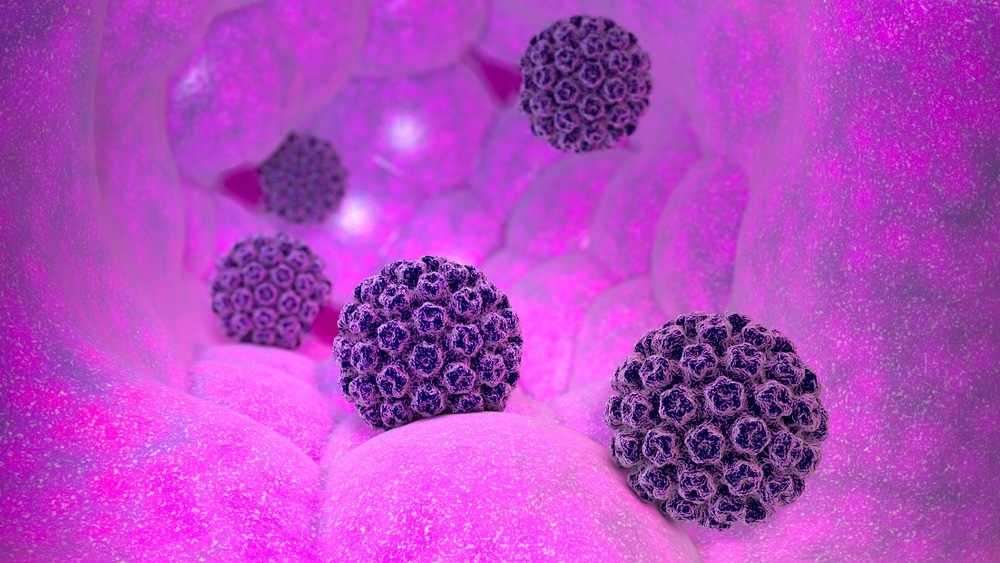In a recent study published in PLOS Pathogens, researchers reviewed the existing knowledge on the mechanisms through which deoxyribonucleic acid (DNA) tumor viruses (DTVs) evade the antiviral immunity mediated through mis-incorporated uracil (U).
 Study: Human DNA tumor viruses evade uracil-mediated antiviral immunity. Image Credit: Naeblys/Shutterstock
Study: Human DNA tumor viruses evade uracil-mediated antiviral immunity. Image Credit: Naeblys/Shutterstock
Background
Ribonucleic acid (RNA) viruses such as human T-cell lymphotropic virus-1 and hepatitis C virus and five DNA viruses, namely, hepatitis B virus, human papilloma virus, Kaposi-sarcoma-associated herpesvirus, Epstein-Barr virus, and Merkel cell polyomavirus, are the oncogenic viruses that affect humans. These viruses utilize several mechanisms to invade the host and evade the antiviral immunity of the host.
Mutagenic mismatches consisting of uracil and guanine (G) pairs are introduced either via misincorporation during DNA replication or through the deaminase action of activation-induced cytosine deaminase (AID) and apolipoprotein B messenger RNA editing catalytic polypeptide-like family of proteins (APOBEC) on cytosine (C). The AID and APOBEC3 (A3) protein families also play an important role in innate and adaptive immunity and are known to successfully restrict DNA and RNA viruses, including some of the human oncogenic viruses.
Furthermore, while the restriction of RNA tumor viruses by the A3 proteins is not known to be uracil-mediated, the uracil-mediated antiviral immune mechanisms against DTVs through the AID and A3 protein families have been of considerable interest in recent times.
Role of uracil in antiviral immunity
Eukaryotic cells repair uracil mismatches in the DNA through the base-excision repair pathway in which uracil is excised by the enzyme uracil-DNA glycosylase, leaving a site that does not contain a nucleotide base. The mismatched uracil can lead to a DNA mutation if the DNA polymerase either copies over the uracil or bypasses the site without the base.
To prevent such mutations, the cell uses another uracil-DNA glycosylase called uracil-N-glycosylase gene (UNG) isoform 2 (UNG2) coupled with the replication machinery for uracil repair during replication. In case the UNG2 machinery does not repair all the uracil mismatches, the mismatch repair machinery recognizes and replaces the mismatched U:G pairs with the correct C:G pairs.
The genomes of DTVs are much smaller than the human genome and do not comprise genes for repair proteins that can excise and remove the uracil bases incorporated by the AID and A3 enzymes. The excision of uncoordinated uracil bases from the DTV genomes leads to an accumulation of abasic sites and subsequent degradation of the viral genome, which is known as uracil-mediated antiviral immunity. Various human oncogenic DNA viruses have developed evasive strategies against uracil-mediated antiviral immune mechanisms.
Countermeasures utilized by DTVs
DTVs evade the uracil-mediated antiviral immunity by either hijacking the host’s cellular uracil mismatch repair machinery or encoding antagonists against the AID and A3 protein families and preventing uracil mismatch in the viral genome. The primary enzyme that repairs uracil mismatches, UNG2, is the most commonly hijacked host enzyme, and various DTVs such as Kaposi-sarcoma-associated herpesvirus and hepatitis B virus use different mechanisms to utilize the host UNG2 to repair the uracil mismatches in the viral genomes and escape the uracil-mediated antiviral immunity. The Epstein-Barr virus does not seem to rely on the host UNG2, but during lytic reactivation of the virus when the UNG2 levels decrease, upregulation of the viral UNG protein BKRF3 has been observed, which is also essential for the replication of Epstein-Barr virus.
The agonistic mechanisms through which DTVs prevent the expression of the AID and A3 proteins involve the action of the viral ribonucleotide reductase large subunit (vRNR). In herpesviruses, the vRNR redistributes the A3 proteins to different compartments in the cell, while the vRNR of the Epstein-Barr virus also inhibits the deaminase activity of the A3 proteins. The hepatitis B virus agonistic protein Hbx also exports cellular A3 proteins out of the cytoplasm, reducing the damage to its genome. The human papilloma virus, Merkel cell polyomavirus, and Kaposi-sarcoma-associated herpesvirus prevent AID and A3 action through other mechanisms involving E6 and E7 proteins, large tumor antigens, and microRNAs, respectively.
Consequences of viral countermeasures
Some antagonistic mechanisms upregulate the expression of the AID and A3 proteins which can disrupt the uracil repair machinery of the host, leaving the host vulnerable to developing cancers induced by viruses. Individuals with various UNG gene polymorphisms are at an increased risk of developing human papilloma virus-associated cervical cancer and hepatitis B virus-associated hepatocellular carcinomas.
Dysregulation of AID by the Epstein-Barr virus is also thought to increase chromosomal translocations between immunoglobulin genes and proto-oncogenes, which have been observed in B-cell cancers associated with the virus.
Conclusions
Overall, the findings suggested that the AID and A3 protein families, which play an important role in the antiviral immunity mediated through uracil, are being utilized by the DTVs to evolve mechanisms to escape the antiviral immune responses. Recent research indicates that the evolution and fitness of the severe acute respiratory syndrome coronavirus 2 (SARS-CoV-2) are being promoted by the A3 proteins. Therefore, further research to understand the roles of A3 proteins in viral evolution is imperative.